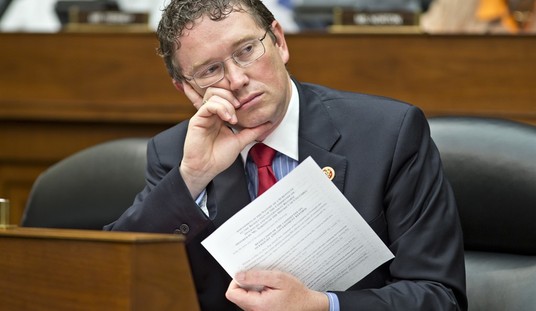To paraphrase the old Tennessee Ernie Ford song — you take a ton of government cash to get job retraining, and what do you get? Several years older and deeper in debt, according to the New York Times, which casts a critical eye on the Workforce Investment Act. The program first came into existence in 1998 and was expanded in the 2009 stimulus bill passed by Democrats, but does it actually help people find work and restore their economic independence? Not really, and the costs more often make situations worse instead of better:
Instead, an extensive analysis of the program by The New York Times shows, many graduates wind up significantly worse off than when they started — mired in unemployment and debt from training for positions that do not exist, and they end up working elsewhere for minimum wage.
Split between federal and state governments — federal officials dispense the money and states license the training — the initiative lacks rigorous oversight by either. It includes institutions that require thousands of hours of instruction and charge more than the most elite private colleges. Some courses are offered at for-profit colleges that have committed fraud in their search for federal funding. This includes Corinthian Colleges Inc., which reached an agreement last month with the federal Education Department to shut down or sell many of its campuses.
The Times’ Timothy Williams walks readers through several anecdotes of utter failure, including one man who ended up $20,000 in debt after getting training to be a cardiology technician — only to discover that no one needed cardiology technicians. He now makes minimum wage at Autozone, a job that he could have had without running up debt for specialty training.
Some of the problems originate with the schools themselves, which don’t always deliver what they promise, but much of it comes from poor guesswork by the government on labor needs. Barack Obama himself emphasized retraining as one of the necessities for transforming the sidelined labor force into the cutting-edge candidates in emerging fields and technologies. Federal and state governments offer grants tied to specific vocational training, including grants that make taxpayers partners with the unemployed who supplement the grants with loans for their training. According to Williams, we have spent the money training thousands of workers for jobs that will never materialize.
Most of them could have done better by staying out of the WIA program:
In some states, data and academic studies have suggested that a vast majority of the unemployed may have found work without the help of the Workforce Investment Act.
In South Carolina, for example, 75 percent of dislocated workers found jobs without training, compared with 77 percent who found jobs after entering the program, according to state figures.
Those who have graduated from these programs don’t usually do much better even when they do find work:
At Central Valley Opportunity Center Inc. in Merced, Calif., of 34 people enrolled in a cooking course in 2012, only three found work, according to school data.
More than one-third of the students who graduated from the center’s welding course and more than two-thirds from its general business course earn less than $20,000 a year, according to school records.
There are a couple of problems with the job-retraining approach. First, the government turns out to be a terrible prophet for labor needs down the road. Second, the issue for the last several years has not been a glut of jobs without qualified applicants, but a glut of applicants for a paucity of open positions. Even if the WIA had overall merit, it would only have sufficient value in the former context, when businesses needed applicants for jobs open now. The WIA would be better aimed at subsidizing employer-based training for jobs that need filling now or in the near future, as a kind of partnership in apprentice work. That would at least ensure that the funding went to real jobs, and not to training centers for jobs that are selected by darts on a dartboard, even if there would be a real danger that taxpayers would just end up subsidizing hiring that would have occurred anyway.
The best solution is to create an economic environment of true growth, which would tighten the labor market and give much more leverage to job seekers. That would mean scaling back regulation and reforming the tax code, neither of which this administration wants to do. Instead, we’re seeing more and more of the chronically unemployed owe their souls to the vocational school.








Join the conversation as a VIP Member